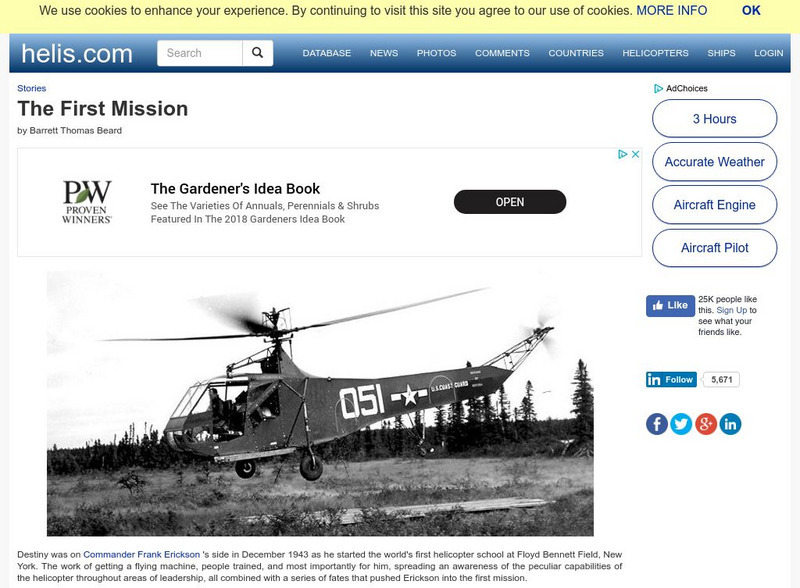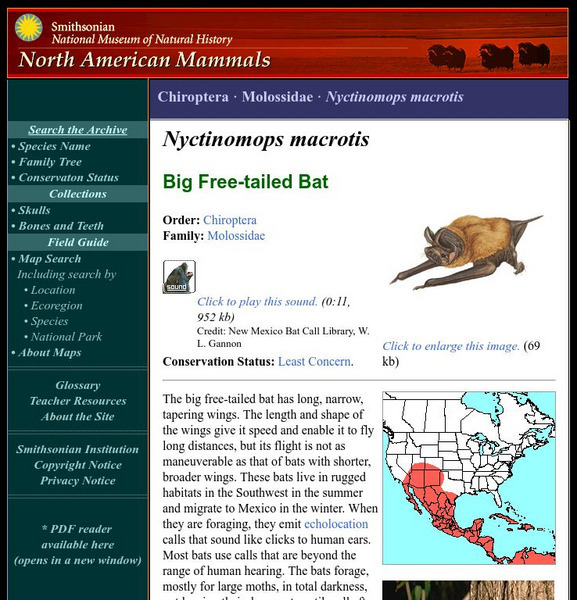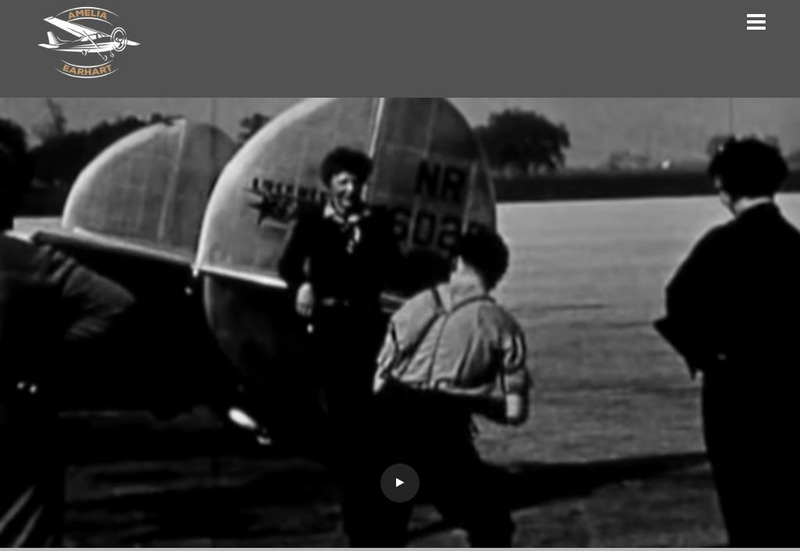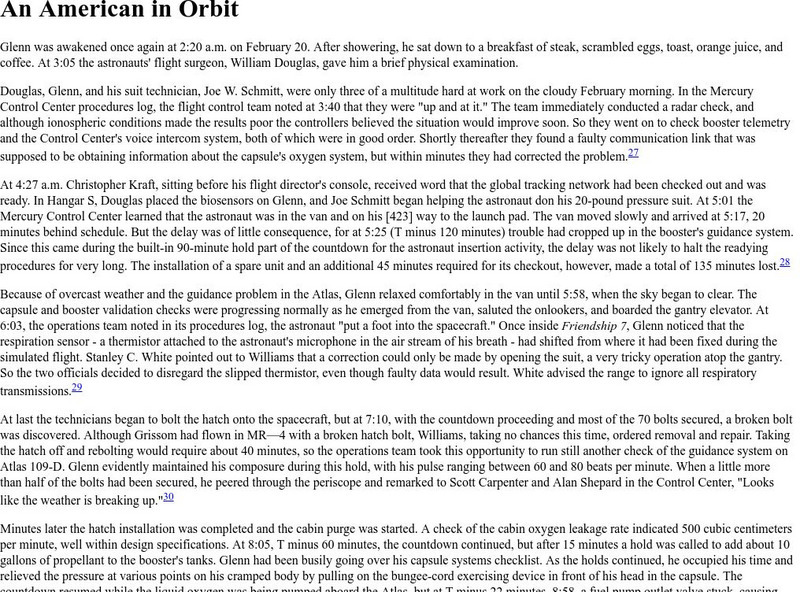Hi, what do you want to do?
Smithsonian Institution
National Air and Space Museum: America by Air: Early Commercial Aviation
Commercial airlines took flight soon after the Wright brothers' famous first flights. Read about how the U.S. government encouraged the development of air travel.
Other
Hooper Virtual Paleontological Museum
This site provides a virtual tour to the Hooper Virtual Paleontological Museum. There are many virtual exhibits to visit through a series of links, including Mass Extinctions and Human Evolution. Very descriptive and fun tour!
Read Works
Read Works: Unearthing Pterosaurs
[Free Registration/Login Required] This passage from the American Museum of Natural History is about the discovery and study of bones from Pterosaurs, extinct flying reptiles that are not exactly dinosaurs or birds. A question set, a...
Scientific American
Scientific American: A Field Guide to Bats : In Depth Reports
Uncover the evolutionary past of the mysterious bats. Find out about their amazing ability to use sonar, the threat of rabies they carry, and conservation efforts to save the species.
National Humanities Center
National Humanities Center: America in Class: America in the 1920s: Felix the Cat
The National Humanities Center presents collections of primary resources compatible with the Common Core State Standards - historical documents, literary texts, and works of art - thematically organized with notes and discussion...
Tramline
Hurricane Virtual Field Trip
What conditions are necessary to create a hurricane? Where do hurricanes occur? When is hurricane season? What is the difference between a tropical cyclone and a hurricane? How is the strength of a hurricane measured? Where do hurricanes...
Curated OER
Wwii Flight Nurse Attends a Wounded Soldier in Prestwick, Scotland, 1944
This brochure was printed to commemorate and capture the history of the Army Nurse Corps. Read about their amazing adventures in WWII while looking at pictures and learning amazing facts about these women.
Royal British Colombia Museum (Canada)
First in the Air in British Columbia
The Royal British Columbia Museum traces the achievements of BC's first men to travel into the colony's atmosphere in the air. The site discusses the hot air balloon flight of Professor Leclaire in 1880 and the flight of Charles K....
NASA
Nasa: Tests Versus Time in the Race for Space
This NASA site offers a good description of the ongoing space race during the Kennedy administration, discussing the "nip and tuck" of the Soviet-U.S. race. Also includes a description of Kennedy's new special assistant for science and...
US Navy
Naval Historical Center: Exorcizing the Devil's Triangle
Howard L. Rosenberg writes this article about the area known as "The Devil's Triangle" or "The Bermuda Triangle." Besides discussing famous lost ships and airplanes, Rosenberg gives detailed information about the geography of the sea...
Khan Academy
Khan Academy: Gallery: The Modern World
Innovations in transportation, communication, and weapons transformed the world in the 20th century. The modern era is the most complex yet, and the most fragile. This photo gallery highlights some of these innovations.
NASA
Nasa: Wernher Von Braun
NASA profiles Wernher von Braun, "one of the most important rocket developers and champions of space exploration during the period between the 1930s and 1970s."
PBS
Pbs: American Experience: The Wright Stuff
Companion website to the PBS documentary on the Wright Brothers and their contributions to aviation.
Other
Helis.com: The First Mission
This helicopter history page provides the fascinating story of Commander Frank Erickson and the world's first helicopter school.
Smithsonian Institution
National Museum of Natural History: American Mammals: Western Pipistrelle
Western pipistrelles sometimes leave their roosts before sundown and can be mistaken for late-flying butterflies, because they are so tiny and fly slowly and erratically, with much fluttering of their wings. Most common at low elevations...
Smithsonian Institution
National Museum of Natural History: American Mammals: Big Free Tailed Bat
The big free-tailed bat has long, narrow, tapering wings. The length and shape of the wings give it speed and enable it to fly long distances, but its flight is not as maneuverable as that of bats with shorter, broader wings. Learn more...
Smithsonian Institution
National Museum of Natural History: American Mammals: Greater Bonneted Bat
Greater Bonneted Bats live in rugged, rocky canyons typical of the arid Southwest, where they inhabit crevices in vertical cliffs. Because of their relatively large body size and narrow wings, these bats are unable to take off from a...
Other
Daniel Grossman: Airships: Lz 129 Hindenburg
A comprehensive look at the design, history, and crash of the Hindenburg airship. Includes flight plans, engineers' drawings, and photos of the interior and exterior. Many first- and second-person accounts of seeing the Hindenburg can be...
Other
Amelia Earhart: The Official Website
A woman wrapped in the mysterious lore of the past makes for an unforgettable character. That, plus the mystique of incredible bravery gives Amelia Earhart a lasting place in history. To this day, her death is unsolved and her character...
Bibliomania
Bibliomania: Nikolai Gogal, Dead Souls
At this website, read all 17 chapters of Nikolai Gogal's "Dead Souls."
Curated OER
Bessie Coleman
Explore the important part that African Americans played in the history of flight in the U.S. After introductory notes on Bessie Coleman and William J. Powell, be sure to click on Black Wings Epilogue for histories of WWII pioneers. Also...
Curated OER
William J. Powell
Explore the important part that African Americans played in the history of flight in the U.S. After introductory notes on Bessie Coleman and William J. Powell, be sure to click on Black Wings Epilogue for histories of WWII pioneers. Also...
Other
Ken Blackburn: Paper Airplanes
Information on paper airplane designs, history, and contests. Click on "Paper Airplane Aerodynamics" for an analysis of the world record holding paper airplane design.
NASA
Nasa: An American in Orbit
This site from NASA provides a detailed description of the first manned American orbital flight of a Mercury spacecraft.





















